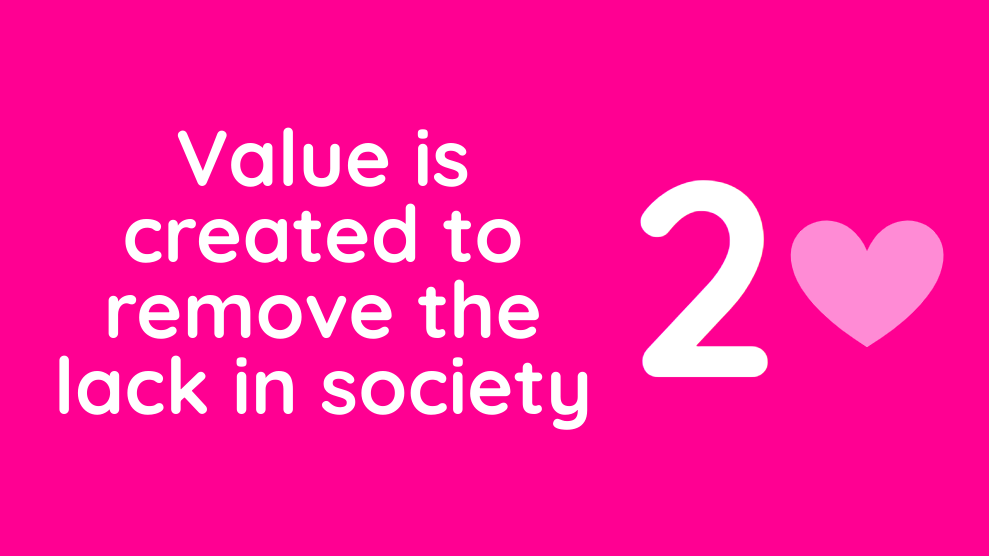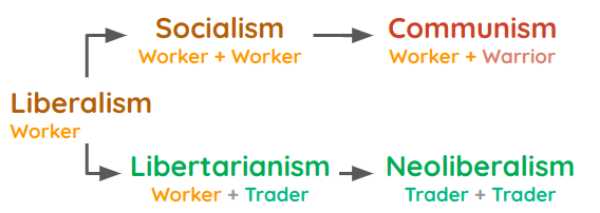The Second Law of Value: Real Price
The First Law of Value introduced Exchangeable Value which is seen as Nominal Price to the Buyer.
The Second Law of Value introduces Real Price which is the Exchangeable Value to the Seller.
What is Real Value?
- Real value is the value of the effort, trouble, hardship, and sentimentalism that is put into the Item by its owner or seller. This leads to the Effort theory of value that we derived from Adam Smith, which is opposite of the Labor theory of value of Karl Marx
- Nominal value is the value of the Item to its buyer/s who may or may not have idea of its real value to its owner
The Second Law of Value states that value goes from areas with high value to areas with low value in order to spread out the value and remove the lack in society.
We simplify this to: value is created to remove the lack in society.
This mirrors the First Law of Thermodynamics, known as the law of conservation of energy*. That law states that energy cannot be destroyed. Instead, it merely changes forms.

Value is created to remove the lack in society
Value Creation from Nothing to Something
The 2nd Law directly addresses the 1st Law which is about everything having value to a mind.
The mind assigns this value because it has needs and desires that can be addressed by that thing.
- A valuable thing addreses a huge desire
- A low-value thing addresses a small desire
- A worthless thing addresses no desire
The 2nd Law then creates that valueable thing from a non-valuable thing to address that desire.
This can be done by:
- making that value yourself. In this case, the value is self-produced. This leads to the 3rd Law
- getting that value from others. In this case, the value is transported or relayed. This leads to the 4th Law
This leads to a flow of value from the 1st to the 4th Law and back to the 1st.

Supereconomics studies and implements the mechanisms and policies to make this this flow sustainable while spreading value to all, even to plants and animals.
Without a society, only the 1st and 2nd Laws are needed.
For example, if you are a hungry caveman, then you pick up fruits and berries to address your hunger.
- The hunger is your effective demand of the 1st Law
- The labor of getting fruits is your real effort of the 2nd Law
- You then eat the fruit, as a good for consumption, to address your own demand
In this case, there is no need for a market price (4th Law) or a systemic way for production and trade (3rd Law) such as employing a 3rd party to check if the fruits are safe to eat.
The main concept in the 2nd Law is the real effort in producing goods and services. This is formalized as the Effort Theory of Value which leads to the concept of Real Price.
The Resulting Concepts from the Second Law
The resulting concepts from the Second Law of Value are:
- The invisible hand of dharma
- The Force of Capital
- Real Prices
- Economic Development
- Primary arbitrage
- Wholesale
- The Philosopher class or cycle